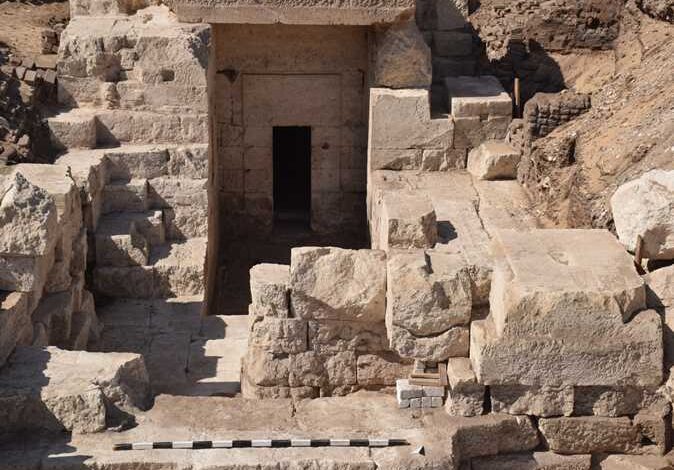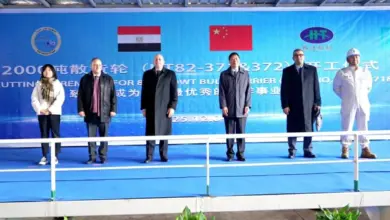
A joint Egyptian-German archaeological mission, composed of members from the Supreme Council of Antiquities and the University of Tübingen, has successfully unearthed a complete Ptolemaic temple during excavations on the western side of the Great Temple of Athribis in Sohag Governorate, Upper Egypt.
The Secretary-General of the Supreme Council of Antiquities, Mohamed Ismail Khaled, emphasized the significance of this discovery.
He explained it marks the first step in revealing the remaining secrets of the new temple at the site. He added that the fully excavated façade of the temple measures 51 meters in width and is divided into two towers, each 24 meters wide, separated by a gateway.
Khaled said that the angling of the towers suggests that the original height of the temple could have been 18 meters, comparable to the dimensions of the temple of Karnak in Luxor Governorate.
He affirmed that the mission will continue its work at the site to uncover the rest of the temple in future excavation seasons.
The Supreme Council of Antiquities will provide full support to the mission, he assured, in accordance with orders by the Minister of Tourism and Antiquities to facilitate the work of the archaeological missions.
Ancient secrets unveiled
The Head of the Central Administration of Upper Egyptian Antiquities and head of the mission on the Egyptian side, Mohammed Abdel-Badie, stated that during the cleaning of the main gateway located in the center of the temple, hieroglyphic texts were discovered adorning the outer façade and inner walls.
Scenes depicting the king receiving the goddess “Repyt,” the goddess of Athribis represented by a lioness head, and her son were also found.
He added that through the study of the cartouches discovered in the entrance and on one of the inner sides, it was found that this gateway dates back to the era of King Ptolemy VIII, who may have been the founder of the temple, and it is also likely that there is a cartouche of his wife, Queen Cleopatra III, among the texts.
The head of the mission on the German side, Christian Leitz, said that the mission was able to complete the excavation of the southern chamber, part of which had been discovered during the excavations of the British archaeological mission at the site under the leadership of the scholar Petrie between 1907 and 1908.
The sides of its entrance were adorned with hieroglyphic texts and scenes depicting the goddess Repyt and the god of fertility “Min,” surrounded by figures of secondary celestial deities representing the stars of the night sky measuring the hours of the night.
The site director on the German side, Markus Müller, stated that the mission had also discovered a room with a staircase that was previously unknown and could be accessed through a small entrance also located on the outer façade of the temple.
The four steps of the staircase indicate that it led to an upper floor that was destroyed in antiquity during 752AD.
The joint Egyptian-German mission has been working in the Athribis area for more than a decade, resulting in the complete discovery of all parts of the Great Temple of Athribis, as well as more than 30,000 ostraca with Demotic, Coptic, and Hieratic texts, and numerous other archaeological finds.




